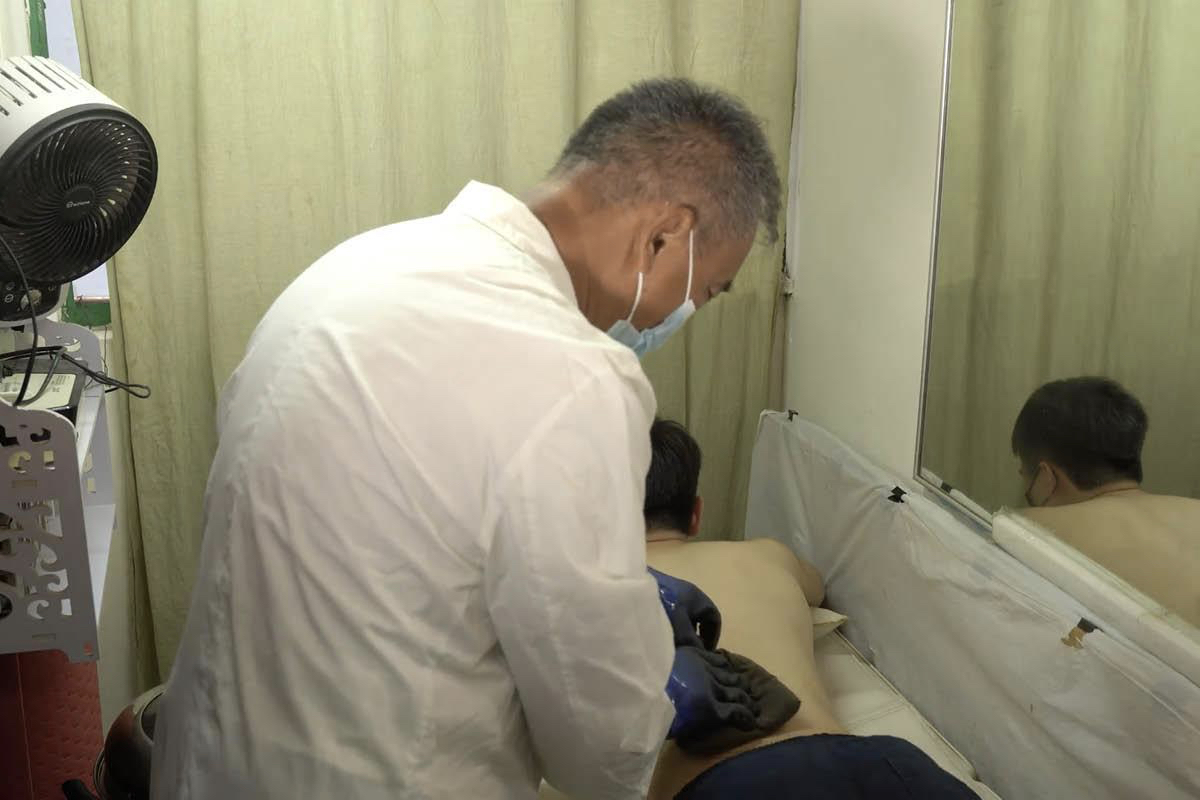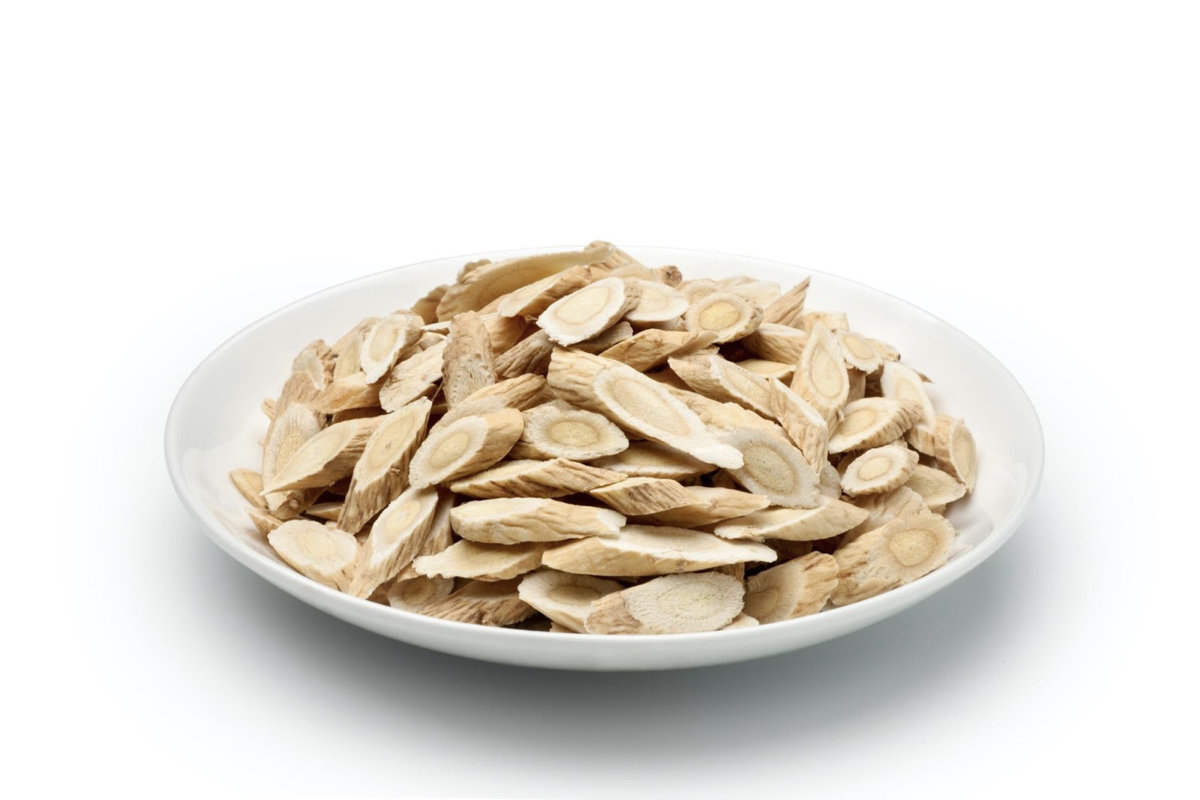Say Goodbye to Chronic Pain With This Powerful Herbal Tea
Distressed Patriotic Flag Unisex T-Shirt - Celebrate Comfort and Country $11.29 USD Get it here>>

It is estimated that approximately 20 percent of adults worldwide suffer from some sort of pain disorder. Many patients are unable to recover after seeking medical treatment repeatedly, and sometimes the cause of pain cannot be fully diagnosed.
Dr. Tse See-li, Hong Kong-registered traditional Chinese medicine (TCM) practitioner said that long-term pain is mostly caused by blood stasis, and the use of Chinese herbal medicine that promotes blood circulation and removes blood stasis can resolve the pain once and for all. He also recommends one Chinese herbal tea drink, which can help improve the body’s microcirculation and remove blood stasis.
“Blood stasis” is a common concept in TCM. TCM believes that physiological activities of the human body not only rely on blood circulation to supply nutrients, but also depend on the energy inside the body—the movement of qi.
Tse pointed out that qi (energy) stays in the blood, and the movement of blood is driven by qi. Only with qi can the blood be pushed to the capillaries and flow around the whole body. If the body does not have enough qi, the microcirculation will become poor, and blood stasis will easily occur.
He likened the movement of qi and blood to the water flow in a river. Sandbars are formed at the turns when the speed of the water slows down and the sediment gradually settles. When qi and blood circulation are blocked, pain will also occur, which is quoted as “pain if there is no flow” in TCM theory.
Modern-day research has also confirmed that chronic pain is closely related to cardiovascular problems. A study based on Taiwan’s National Health Insurance Research Database found that people with chronic pain have a significantly higher risk of developing cardiovascular and cerebrovascular diseases than others. After adjusting for the effects of diseases such as hypertension, diabetes, and hyperlipidemia, the risk of stroke and other cardiovascular and cerebrovascular diseases in patients with chronic pain is still 30 percent higher.
Old Wounds’ Quiet Presence Brings New Pain
The cause of blood stasis is not only caused by one’s specific constitution, but also by external or internal injury. An injury causes blood to leave a vessel, forming localized bruising. If the blood stasis cannot be absorbed by the body, it will also affect the microcirculation of nearby tissues, and the blood stasis thus formed could enlarge with time, which in turn affects the tissue function of the body.
Tse once treated a patient with complaints of chest pain. He had difficulty breathing, and the pain was so stressful that he couldn’t sleep at night. He tried painkillers and acupuncture, but still to no avail. Tse tried stacking a hot pack stuffed with herbal medicine on the visibly affected area and found many bruises floating onto the skin surface. Tse found it very strange and asked him if his chest had ever been injured.
The patient recalled for a while and remembered that he once fell on his back—9 years ago. At the time of the injury, the pain was relieved by massage with Diedajiu (Chinese medicinal liniment), and since then he had forgotten about it. Tse speculated that when he fell, he injured his thoracic spine area, resulting in minor blood stasis, but as the tissues near the blood stasis could not be nourished by fresh blood, it in turn affected other body functions over time.
“TCM believes that if blood stasis does not go away, new blood will not be produced. Because of the accumulation of blood stasis, fresh blood cannot reach that area, and the stasis will spread further and further,” added Tse.
Tse’s treatment is to use Chinese herbal medicine to make a medicinal bag, boil it with wine, and then place the bag on the affected area. Under the action of temperature and medicinal power, the blood stasis will be loosened and becomes easier for the body to absorb. The whole process takes about half an hour to an hour. For bruises from fresh injuries, it can be recovered after two or three treatments, while for the old and more stubborn ones, it takes five to 10 treatments for a full recovery.

Joint Pain From Bruising
Modern-day scientific research has also found that many Chinese herbal medicines can improve pain. A meta-analysis study found that patients with knee arthritis can improve their pain by soaking the affected area in a Chinese herbal solution, with an effective rate 20 percent higher than conventional treatment.
Tse has been using this stasis-removal therapy to treat many patients with long-term joint pain. He said that he once came across a patient who had sought medical treatment everywhere and had been seeing many Chinese and Western doctors both locally and abroad, yet his joint pain just became more and more serious, and he was unable to work in the end.
Some doctors advised him to have an artificial joint replacement, while others suggested he be referred to a neurologist. The patient finally found Tse, and after five treatments of blood stasis removal, the patient was able to return to his work.
Why didn’t other doctors see the problem of bruising? Tse explained that a bruise the size of a grain of rice is already big enough to cause pain if it slips inside the joint. However, Western medicine mainly uses X-rays to diagnose syndromes, which can only see the bones and often miss the minute blood stasis. Because of that, it is often misdiagnosed as joint aging or bone spurs being the main culprit.
Frequent Cold Drink Takers Are Prone to Blood Stasis
Apart from blood stasis caused by bruises from injury, Tse pointed out that there is another kind of injury called “internal injury.” It may be caused by food or medicine.
He believes that one of the reasons why modern-day people are more prone to pain is that they often take cold drinks, which can easily affect blood circulation and make pain symptoms appear at a younger age. In particular, for women, having too many cold drinks is prone to dysmenorrhea, and even uterine fibroids, leading to infertility.
Tse also pointed out that when people get older, the flow and circulation of qi and blood slow down, making it easier to form blood stasis. Therefore, in addition to keeping up with workouts to promote blood circulation, one can also take Chinese herbal tea to help regulate the body.
Chinese Herbal Tea to Promote Blood Circulation, Remove Blood Stasis
Ingredients: astragalus 75g (2.7 ounces), angelica 7.5g (0.27 ounce), red peony root 7.5g (0.27 ounce), Chuanxiong rhizome 3.75g (0.13 ounce), peach kernel 3.75g (0.13 ounce), safflower 3.75g (0.13 ounce).
Preparation: Wash all the above and boil in 1 to 2 liters (2 to 4 pints) of water for half an hour. It can be taken in portions throughout the day.
Contradictions: Women should not take it during pregnancy and menstruation. People with yin deficiency and internal heat constitution should take it in moderation.

According to Tse, this prescription is based on the “Buyang Huanwu (Yang-supplementary & Five-returning) Decoction” by Wang Qingren, an eminent TCM practitioner in the Qing Dynasty, and adjusted to the appropriate amount for daily health care purposes. He often drinks it himself.
“Buyang Huanwu Decoction” is a commonly used formula in the treatment of stroke in TCM, and its efficacy has been confirmed by many modern-day studies. Apart from treating ischemic stroke, it is also beneficial for other vascular diseases, such as diabetic nephropathy and angina pectoris.
Tse pointed out that this prescription uses a large amount of astragalus, focusing on nourishing qi and blood, combined with other medicinal materials that can promote blood circulation, it has the effect of dispelling blood stasis.
Astragalus nourishes qi, can strengthen heart contraction, reduce thrombus formation, promote bone marrow hematopoiesis, and regulate blood sugar.
Angelica invigorates qi, activates blood, moistens the intestines, and laxes the bowels.
Paeoniae Rubra has an inhibitory effect on platelet aggregation and thrombus formation, can increase coronary artery flow, and expand the pulmonary blood vessels.
Chuanxiong rhizome can strengthen the heart and can treat angina pectoris. For example, it can treat dementia in the elderly when combined with ginseng.
Peach kernel promotes blood circulation and removes blood stasis, moistens the intestines, and relieves constipation. Safflower can enhance capillary microcirculation.
However, it should be noted that Chinese medicine classifies people’s constitutions into different types. With such a difference in constitutions, the corresponding medicinal materials needed are also different. Tse advised that if you are a person who often feels dry and hot in cold weather, you belong to the “yin deficiency and internal heat” group. In that case, you should not take too much of this tea.
*Some herbs mentioned in this article may be unfamiliar, but they are generally available in Asian supermarkets.
Note: Because different people have different body constitutions, it is recommended to consult your doctor or TCM experts.




